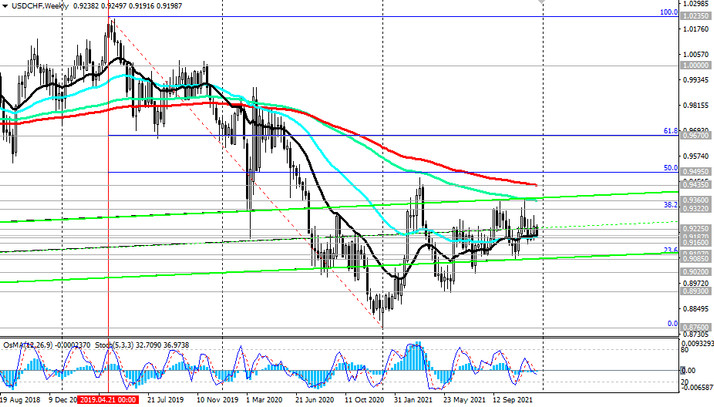By the way, if you look at the dynamics of the DXY dollar index and the USD / CHF pair since the beginning of this year, it is in many ways similar. Despite the decline at the beginning of the European session, USD / CHF remains positive, staying in the bull market zone above the key support level in the form of the 200-period moving average on the daily chart of this currency pair, which is currently passing through the 0.9187 mark.
The DXY dollar index, in turn, is slightly declining today, remaining in the upper part of the range between local highs near 96.94 and local minimums near 95.54, reached at the end of November, trading near 96.37.
Most likely, the US dollar is falling against the background of investors fixing profits on long positions. However, the room for the fall appears to be limited, economists say.
The dollar remains positive after last week the Fed decided to keep interest rates unchanged, but to cut monthly purchases of Treasury bonds and mortgage-backed securities. The Fed cut its monthly purchases of $ 20 billion in Treasuries and $ 10 billion in mortgage-backed securities to $ 40 billion and $ 20 billion, respectively, stating that “similar cuts in net asset purchases are likely to be appropriate every month, but it is willing to adjust the pace of purchases, if required by changes in economic prospects”. From January, purchases will decrease by $ 30 billion per month. The decision to accelerate the phasing out of stimulus is explained by "the dynamics of inflation and further improvement in the state of the labor market". Thus, $60 billion worth of treasury and mortgage-backed securities will be purchased in January, and the stimulus program will be fully completed by March next year, which will create conditions for raising interest rates (earlier, Fed Chairman Powell repeatedly stated that the quantitative easing program will first be curtailed before interest rates begin to rise). Most Federal Reserve officials have signaled that they are ready to raise the short-term interest rate three times next year to slow inflation.
It is possible that the US dollar may still decline until the end of this year, because investors will fix the profits earned on its growth. However, next year it will recover and resume growth. The importance of higher Fed interest rates and the prospect of widening divergence in US interest rates (compared to other advanced economies in the world) is coming to the fore.
This also applies to the policy of the National Bank of Switzerland. As a result of the meeting ended last week, the Central Bank of Switzerland kept its current policy unchanged, leaving the key interest rate on demand deposits at the level of -0.75%. The target range for the 3-month Libor rate was also left unchanged at -1.25% / -0.25%. The NBS statement following the meeting again, traditionally, said that the Central Bank is still ready for foreign exchange interventions with the sale of the franc, if necessary, in order to withstand the upward pressure on its rate. According to the leaders of the NBS, the franc remains highly overvalued. According to the bank's forecast, inflation will decline to more moderate levels, although it remains at rather low levels in comparison with other major economies in the world. The NBS forecast for inflation for 2021 is 0.6%, for 2022 for 1.0%, for 2023 for 0.6%, while the forecast for GDP growth this year is 3.5%.
In this regard, it is also likely to be of interest the publication tomorrow at 14:00 (GMT) of the quarterly report of the Swiss National Bank, which includes reports on monetary policy, business trends, currency exchange rates.
According to the head of the Swiss Central Bank, Jordan, "inflation in Switzerland has reached peak values and will now decline next year", and "inflation forecasts in the country remain within the range of price stability". The Swiss National Bank will continue to monitor the situation with the franc exchange rate and "will take appropriate measures if necessary", Jordan promised.
The threat of currency intervention, which the Swiss National Bank does not report either before or after it, is certainly a strong deterrent to the strengthening of the franc, although it will retain its safe haven status, which will support demand for it and its quotes.
However, in USD / CHF one should still focus on its positive dynamics and continued growth, albeit at a more moderate pace. At the moment and since the beginning of the year, USD / CHF is traded in the mid-term bull market zone, remaining above the key support level 0.9187. If its positive dynamics persists, we should expect growth to the zone of the key long-term resistance level 0.9435, a breakout of which will mean a return of USD / CHF into the zone of the long-term bull market.






